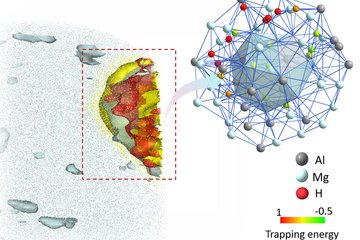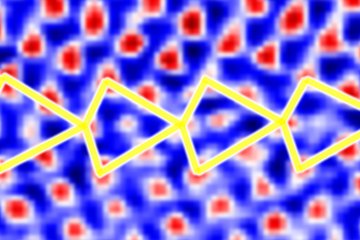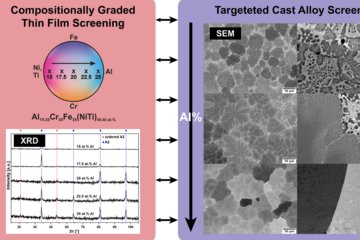All genres
1621.
Talk
Evaluation of twin boundary interfaces to strain hardening by electron channeling contrast imaging. TMS 2012 Annual Meeting, Orlando, FL, USA (2012)
1622.
Talk
Exploring the internal interfaces at the atomic-scale in thin-film solar cells. Seminar Talk at Helmholtz Zentrum Berlin (HZB), Berlin, Germany (2012)
1623.
Talk
On the Role of Mg Atoms in Calcite Crystals: An Ab Initio Study. EURO Bio-inspired Materials, International School and Conference on Biological Materials Science, Potsdam, Germany (2012)
1624.
Talk
On the role of Mg atoms in calcite crystals: An ab initio study. DPG Frühjahrstagung, Berlin, Germany (2012)
1625.
Talk
Nanostructuring of 1 Mio tons: Designing ultrastrong and ductile steels. DPG meeting (Deutsche Physikalische Gesellschaft), Berlin, Germany (2012)
1626.
Talk
The art of experimentation in micromechanics: Lattice defects in steels. GAMM Conference, Darmstadt, Germany (2012)
1627.
Talk
Partitioning and austenite reversion at martensite-austenite interfaces in Mn-steels. TMS 2012 Annual Meeting, Orlando, FL, USA (2012)
1628.
Talk
Joint DFT and TEM study on the ductilizing effect of rare earth elements (RE) on Mg alloys. TMS 2012 Annual Meeting, Orlando, FL, USA (2012)
1629.
Talk
Crustacean skeletal elements: Variations in the constructional morphology at different hierarchical levels. DFG Winter School Priotity Programme 1420: "Biomimetic Materials Research: Functionality by Hierarchical Structuring of Materials", Potsdam, Germany (2012)
1630.
Talk
Why do co-deformed composites have high strength after phase dissolution? SurMat Seminar 2012, Meschede, Germany (2012)
1631.
Talk
A modular crystal plasticity framework applicable from single grain to component scale. TMS Annual Meeting, San Diego, CA, USA (2012)
1632.
Talk
Nanostructuring of 1 Million tons: Designing steels using quantum mechanics and atom probe tomography. Seminar Talk at University of Saarland, Saarbrücken, Germany (2012)
1633.
Talk
Exploring the formation of different lamination configurations within the orientation space. 11th GAMM-Seminar on Microstructures, Universität Duisburg-Essen, Essen, Germany (2012)
1634.
Talk
Shark teeth: Relating hierarchical structure, composition, and the resulting mechanical properties for bio-inspiration. Ringberg Symposium 2012: Generation of Inorganic Functional Materials - Implementation of Biomineralization Principles, Schloss Ringberg, Rottach-Egern, Germany (2012)
1635.
Talk
Arthropod cuticle: A biological multi-functional composite used as template for nano-to-macro-scale hierarchical modelling. EURO Bio-inspired Materials, International School and Conference on Biological Materials Science, Potsdam, Germany (2012)
1636.
Talk
New insights on quantitative microstructure characterization by electron channeling contrast imaging under controlled diffraction conditions in the SEM. Microscopy & Microanalysis, Phoenix, AZ, USA (2012)
1637.
Talk
Effect of local stress state on the glide of ½a₀<111> screw dislocation in bcc-Fe. 1st Austrian-German Workshop on Computational Materials Design, Kramsach, Austria (2012)
1638.
Talk
Structural interfaces enable function-related variations of properties in the exoskeleton of crustacea. Ringberg Symposium 2012: Generation of Inorganic Functional Materials Implementation of Biomineralization Principles, Rottach-Egern, Germany (2012)
1639.
Talk
Advanced analysis of 3D EBSD data obtained by FIB-EBSD tomography. European Microscopy Congress, Manchester, UK (2012)
1640.
Talk
On the Reconstruction and Analysis of Interfaces in 3D-EBSD Datasets. RMS EBSD Meeting 2012, Teddington, UK (2012)











